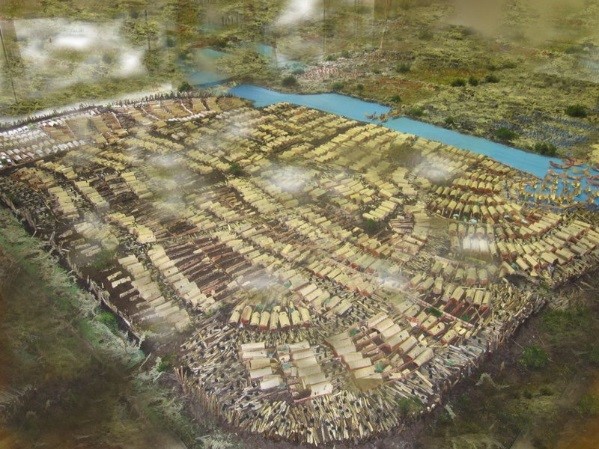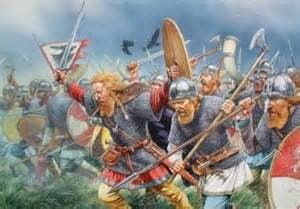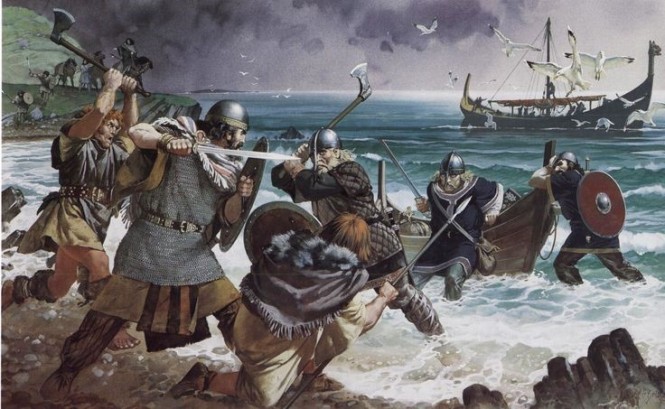In 1918, after years of Danish rule Iceland became an independent state, but remained in union with Denmark. Iceland declared itself a neutral country without a defence force.

As World War Two developed the Germans launched Operation Weserubung on the 9th April 1940, invading both Norway and Denmark. Denmark fell within a day and was occupied by the Germans. With Denmark defeated the British government sent Iceland’s government a message stating that Britain was willing to assist Iceland in maintaining her independence but would require facilities in Iceland to do so. Britain also invited Iceland to join the war as an ally, but they rejected Britain’s offer.
On April 12th Britain took over the Faroe Islands. With the occupation of Norway and Denmark, the British became concerned that Germany would try to establish a military presence in Iceland which would be an intolerable threat to British control of the North Atlantic. The British were also very eager to obtain bases in Iceland to strengthen their Northern Patrol.
As the situation in Norway deteriorated, the British Admiralty came to the conclusion that Britain could no longer do without military bases in Iceland. On the 6th May Churchill presented the case to the War Cabinet. Churchill maintained that if further negotiating with the Icelandic government were attempted, the Germans might learn of them and act first. A more effective solution was to land troops unannounced and present the Icelandic government with no other option.
The allies became increasingly concerned by the strategic importance of Iceland and the number of German diplomats present in the country. In an attempt to deny Iceland to the Germans, the British Royal Navy and Royal Marines took part in an operation, code named Operation Fork, on the 10th May 1940 to invade Iceland.
The operation was organised hastily with much of the plan being conducted on route. The force had very few maps and most were of poor quality, including some drawn from memory, and no one in the force was fluent in Icelandic. The British intended to land all their forces at Reykjavik where they could overcome resistance and defeat local Germans. To guard against a German counterattack by sea, they would secure the harbor and send troops by land to nearby Hvalfjörður. The British were also worried that the Germans might airlift troops, as they had done with great success in Norway. To guard against this, troops would drive east to the landing grounds at Sandskeið and Kaldaðarnes. Lastly, troops would be sent by land to the harbor at Akureyri and the landing ground at Melgerði in the north of the country.

On May 3rd 1940 the 2nd Royal Marine Battalion in Surrey were made ready to move in two hours to an unknown destination. The troops were mostly new recruits and only partially trained. On May 7th the force headed to the harbor at Greenock and made to board the cruisers Berwick and Glasgow. There were numerous delays and as a result, they didn’t leave until May 8th and even left large amounts of equipment on the piers. The cruisers were not designed to take a force of this size and conditions were cramped. Despite good weather, most of the marines developed severe seasickness and one of the new recruits committed suicide on route.
At 01:47 on May 10th, they launched a Supermarine Walrus reconnaissance aircraft to scout enemy submarines that the British were convinced were operating from Iceland’s harbors. Despite orders not to fly over Reykjavik itself, it flew several circles over the city making considerable noise, waking up a number of people and losing the element of surprise.

Werner Gerlach, the German consul was alerted to the aircraft and suspecting what was about to happen drove down to the harbor. Using his binoculars, he confirmed his fears before hurrying back home to arrange the burning of all his documents.
At 03:40 an Icelandic policeman saw a small fleet of warships approaching that were about to violate Icelandic neutrality. A boat loaded with 400 Marines landed at the harbor at 5am and a crowd had assembled along with several police. The locals were asked not to interfere with the British Troops so not to cause conflicts between them and the Icelanders, although some of the locals protested the British presence.
Operations began in Reykjavik, a notice was posted on the post office in broken Icelandic that British Forces were occupying the city and asked for cooperation in dealing with local Germans. The telecommunication and broadcasting services were quickly put under British control to prevent news of an invasion reaching Berlin.

Priority was put on finding the German consulate. British troops were relieved to meet no resistance and simply knocked on the consulate’s door. He protested against the British invasion saying Iceland was a neutral country, only to be reminded in turn that Denmark had also been a neutral country. The British discovered a fire upstairs with a pile of documents burning. They then extinguished this and were able to salvage a number of records. The British rounded up and captured the Germans in Iceland without resistance.
On the evening of 10th May, the government of Iceland issued a protest, charging that its neutrality had been “flagrantly violated” and “its independence infringed”, noting that compensation would be expected for all damage done. The British promised compensation, favorable business agreements, non-interference in Icelandic affairs, and the withdrawal of all forces at the end of the war. Resigning themselves to the situation, the Icelandic authorities provided the invasion force with de facto cooperation, though formally maintaining a policy of neutrality.
Although the British action was to forestall any risk of a German invasion, there is no evidence that the Germans had an invasion planned. After the British invasion, the Germans drew up a report to examine the feasibility of seizing Iceland. The report found that while an invasion could be successful, maintaining supply lines would be too costly and the benefits of holding Iceland would not outweigh the costs.




 treason. The same Earl who, in 1462, condemned his Brother.
treason. The same Earl who, in 1462, condemned his Brother. son Arthur, Prince of Wales.
son Arthur, Prince of Wales.